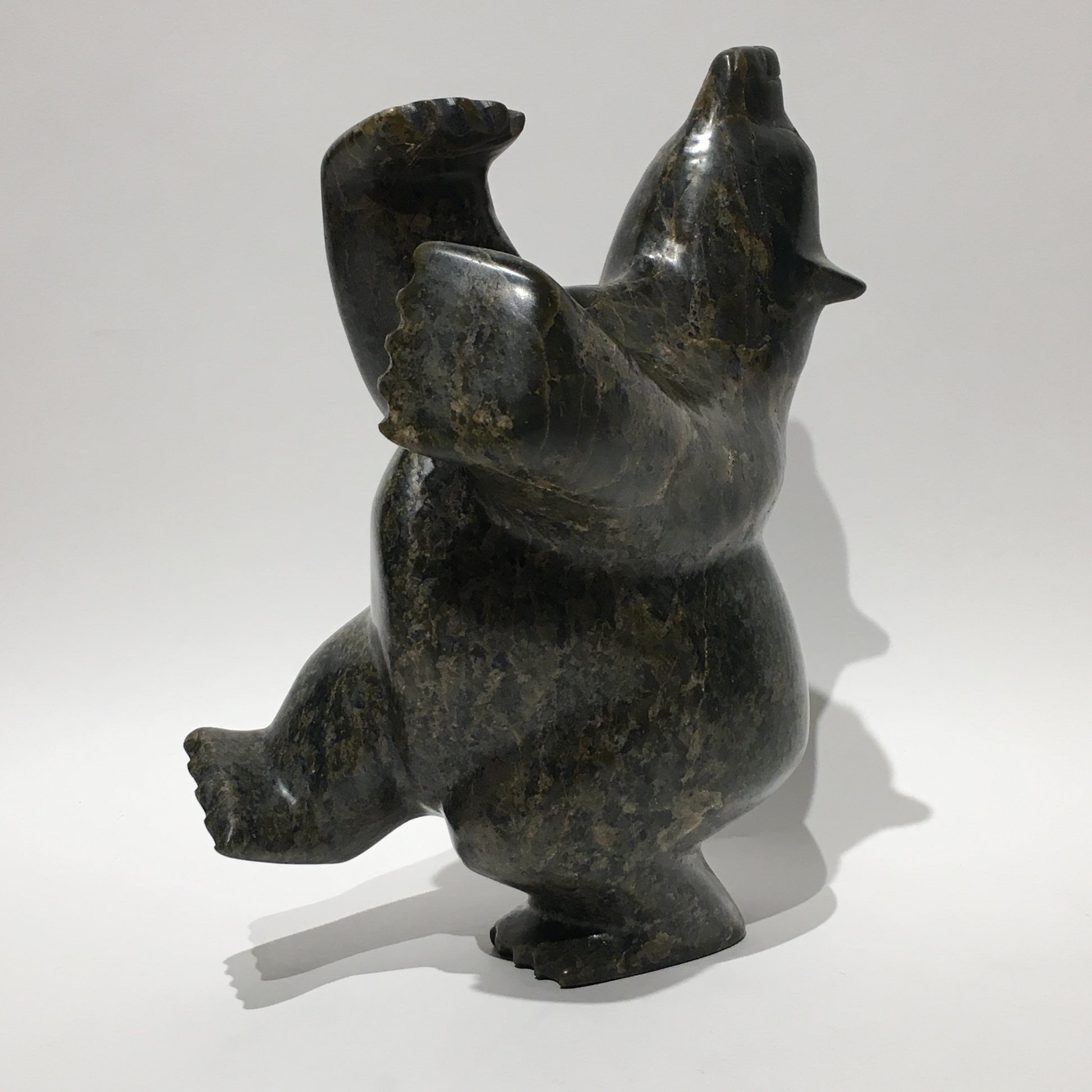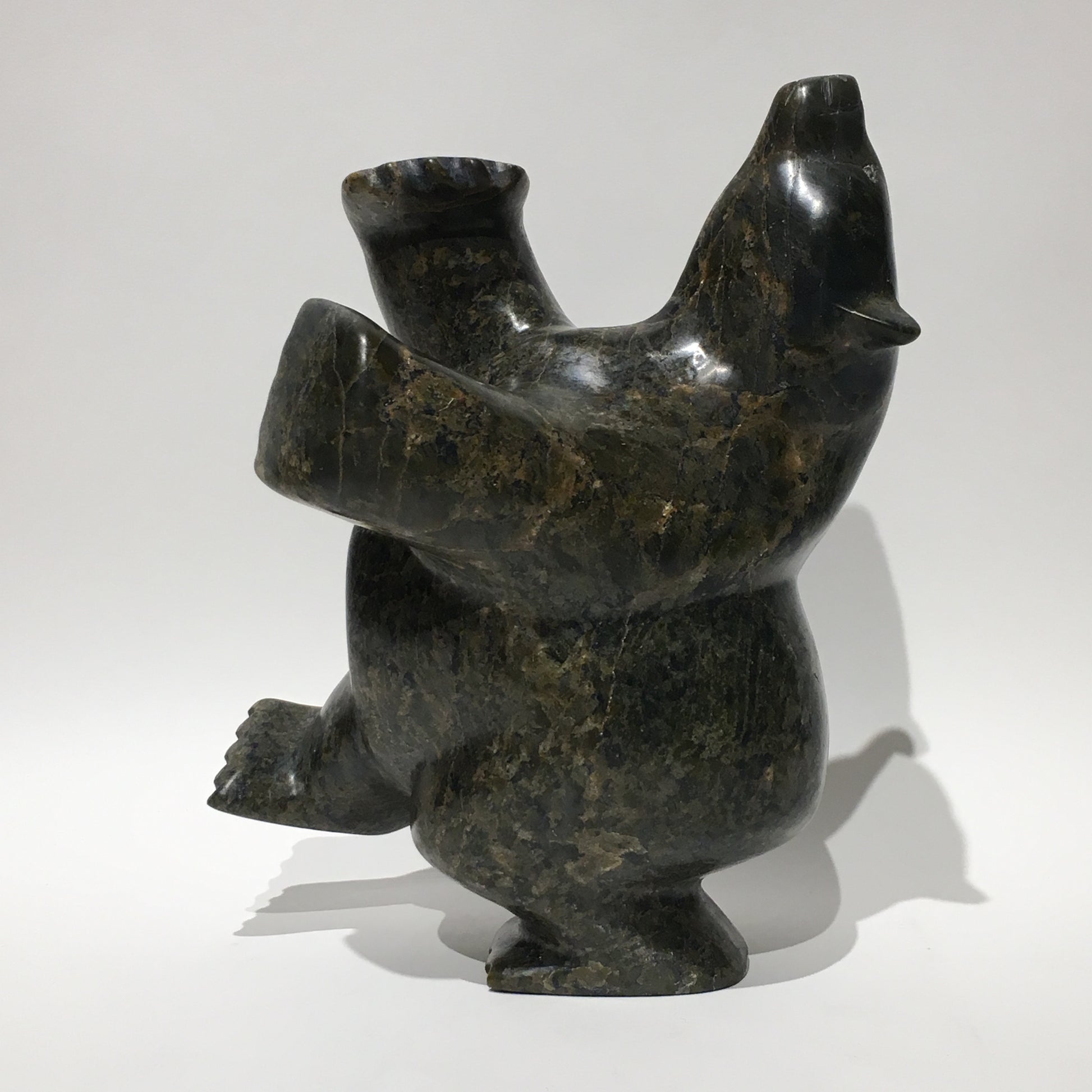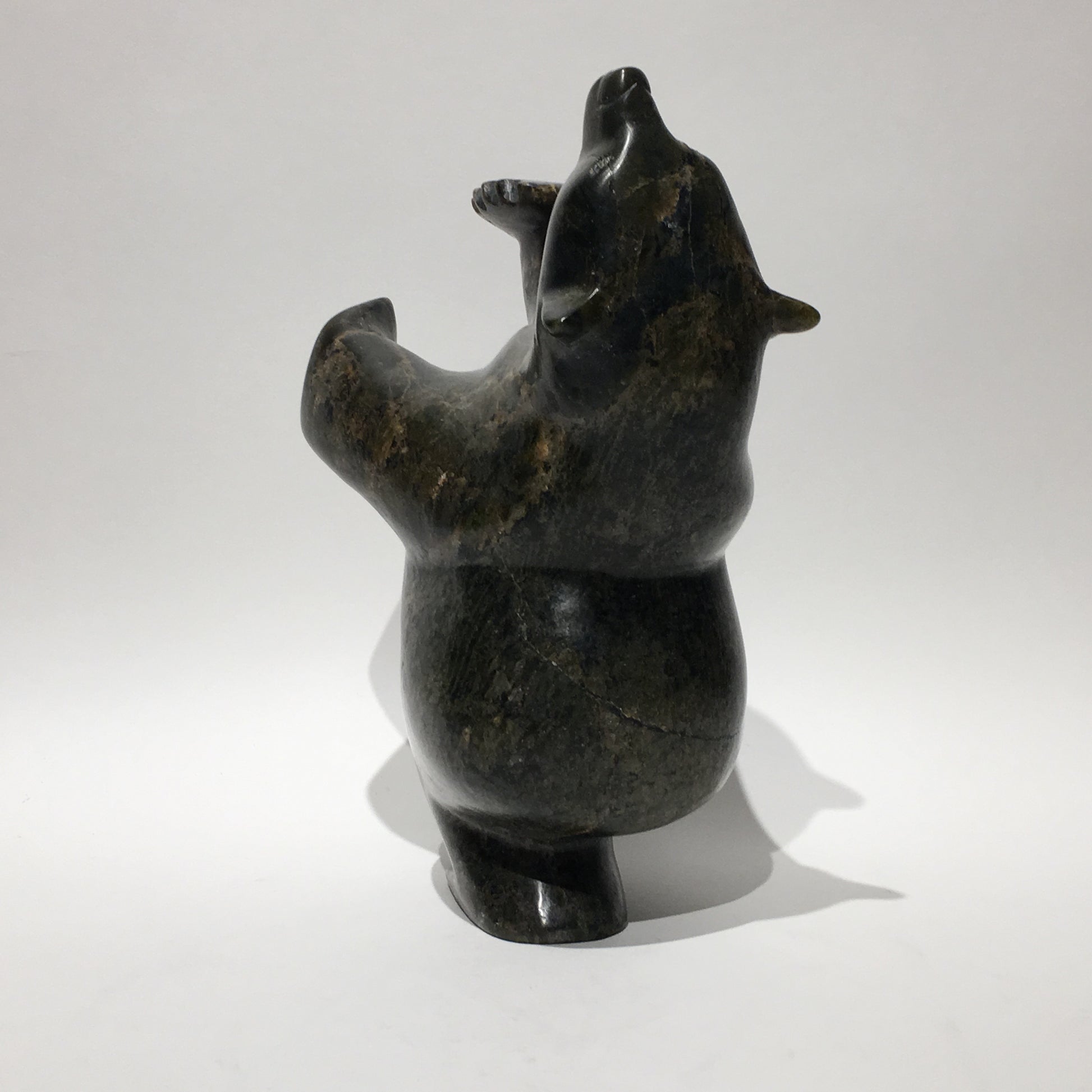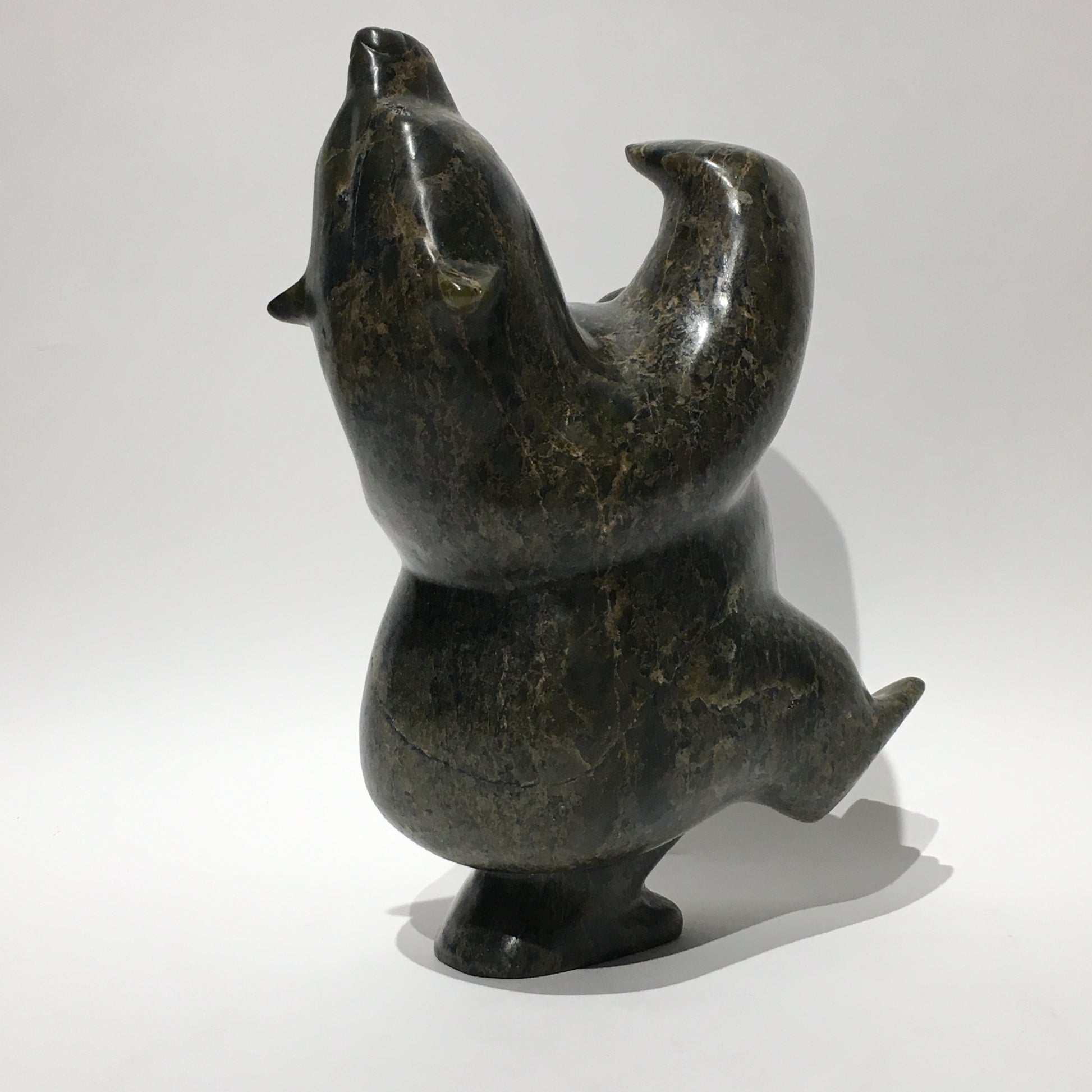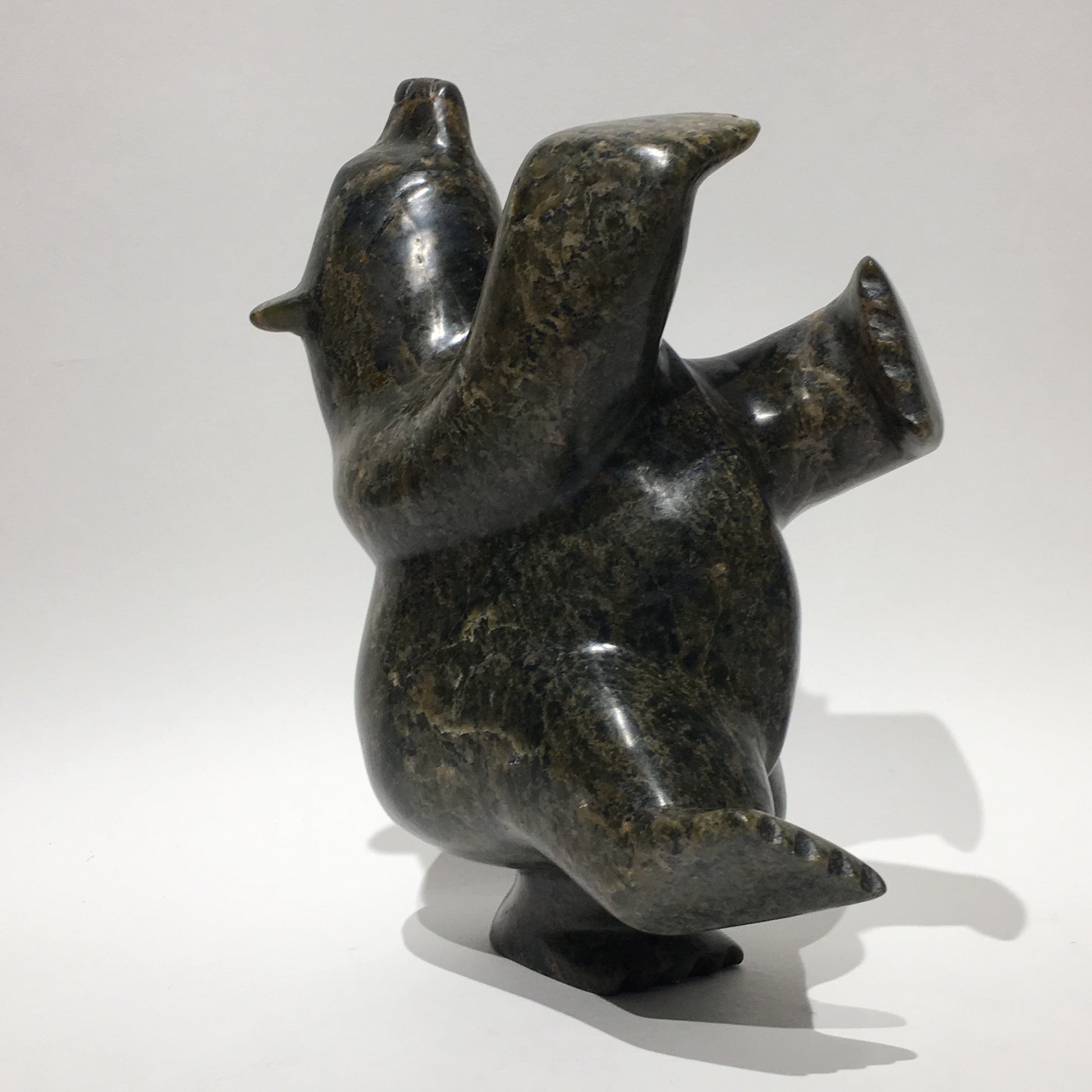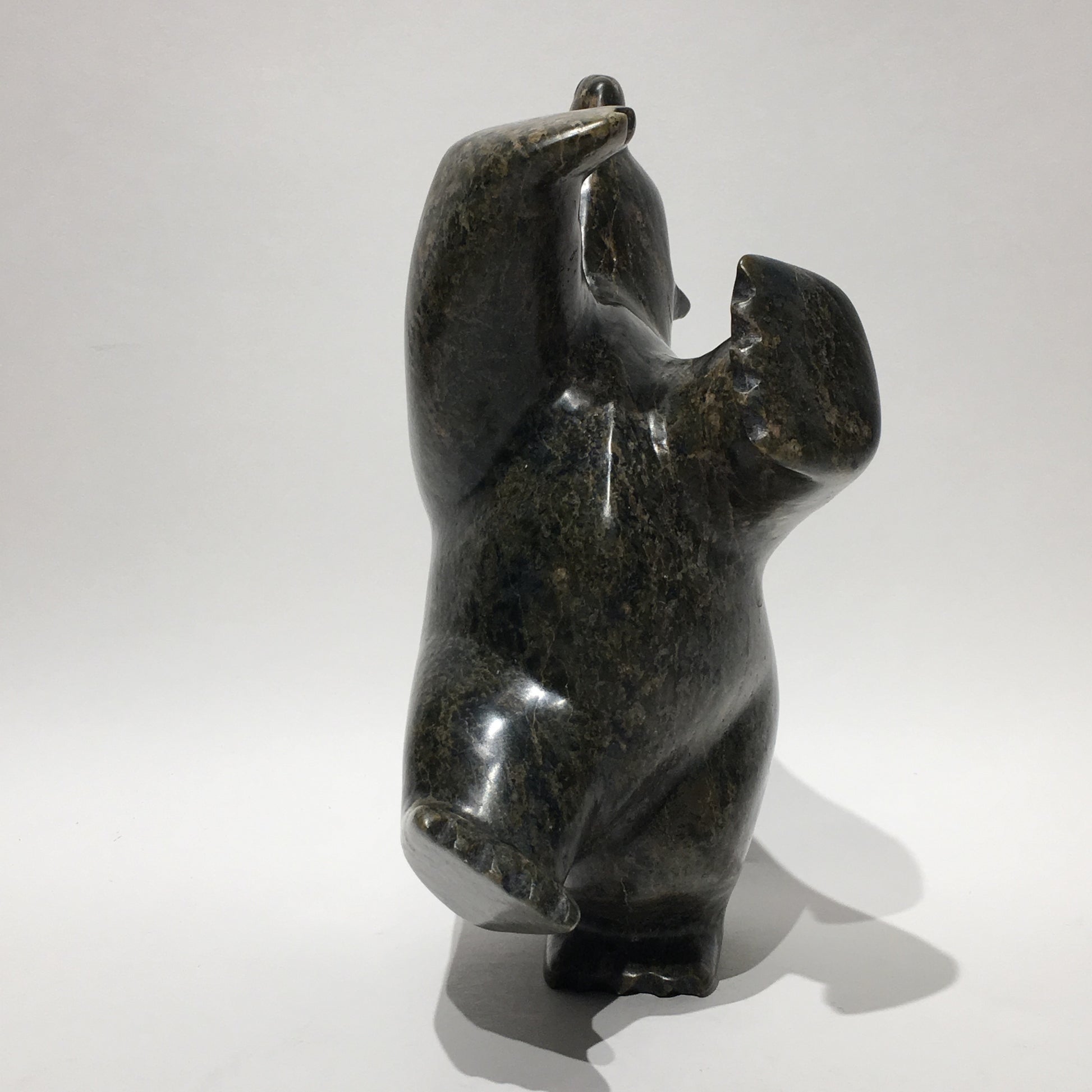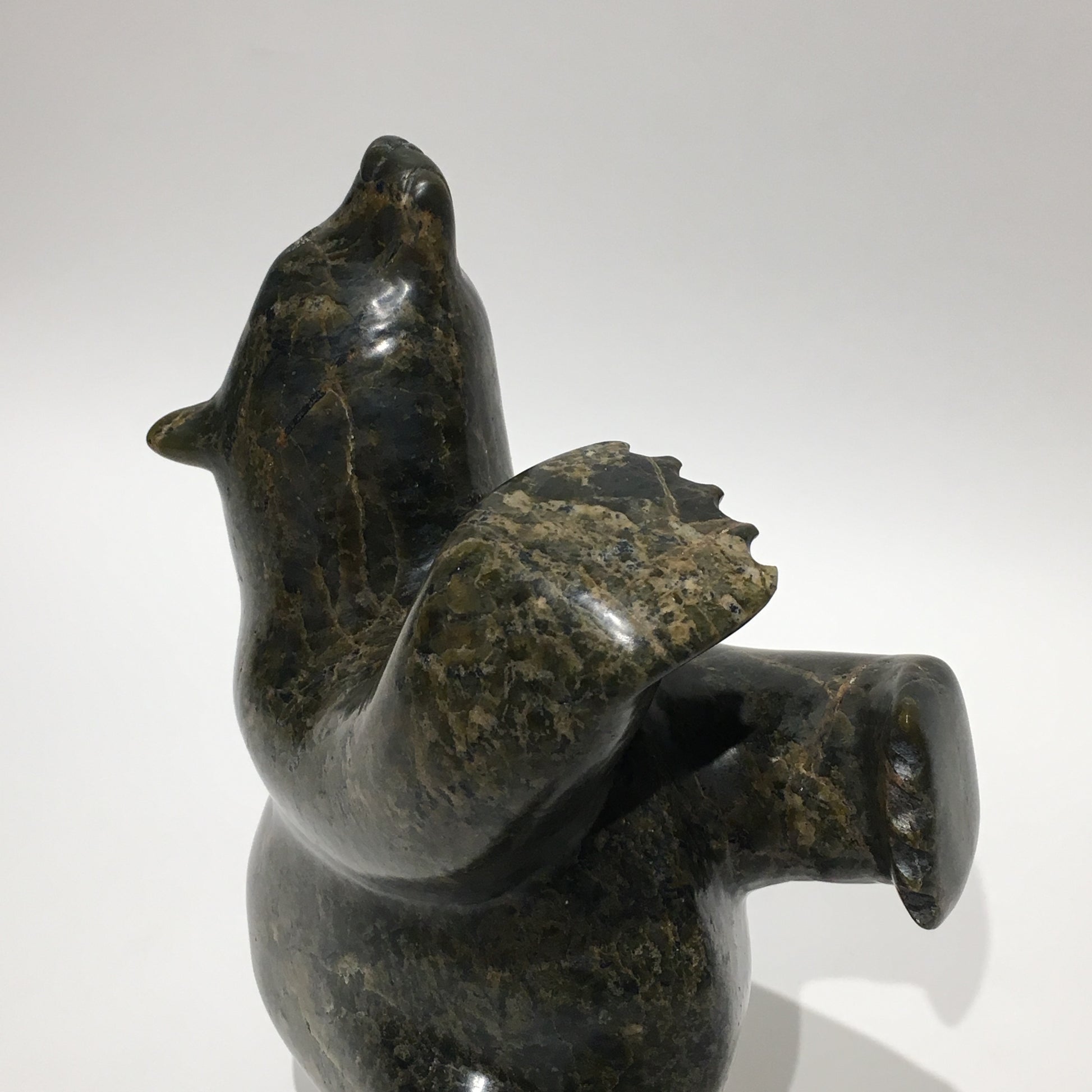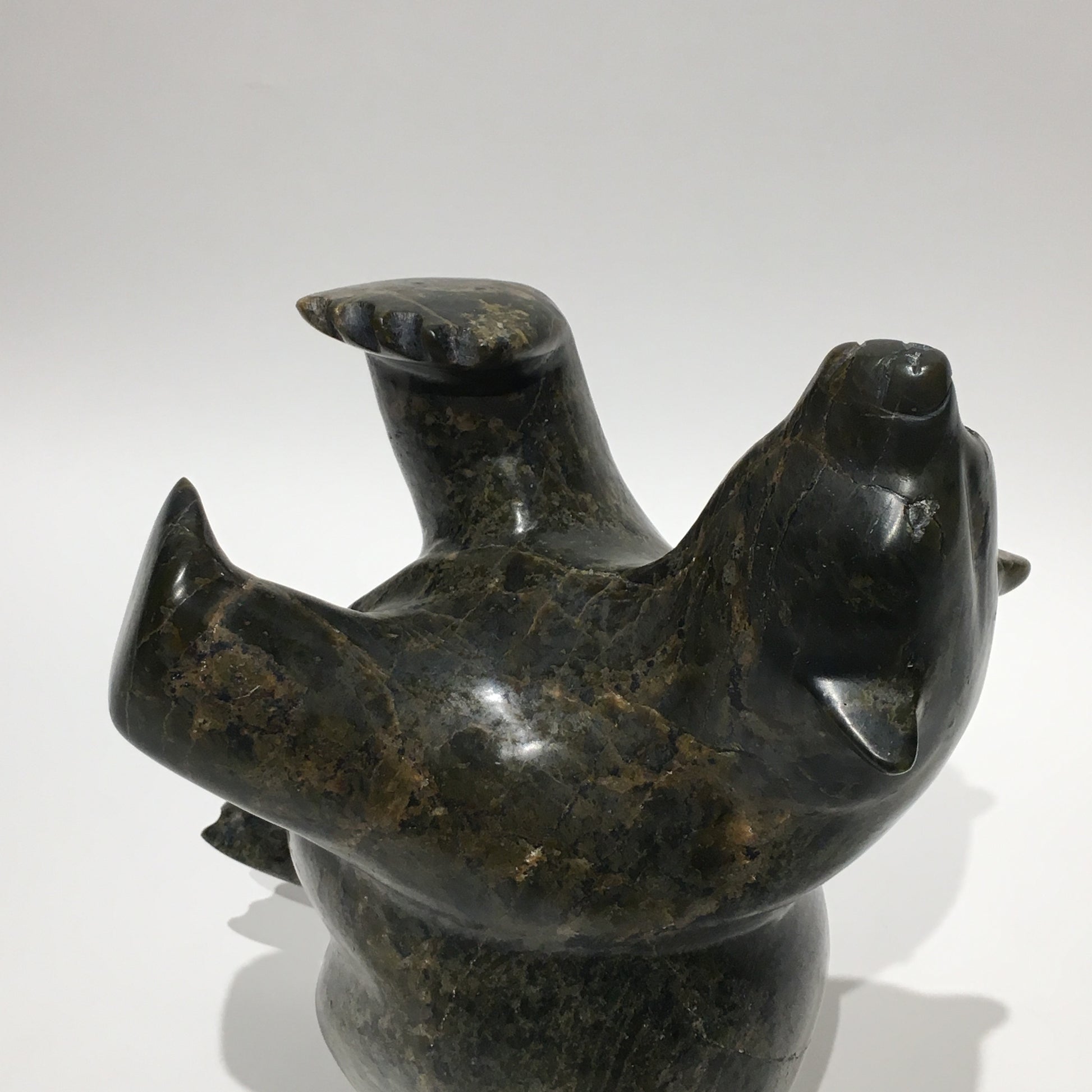Native Art Gallery
Dancing Bear
Dancing Bear
Artist: Killiktee Killiktee
Community: Cape Dorset
Medium: Soapstone
Dimensions (in): W6.0 x H 4.0 x D9.5
Reference: 106287
Couldn't load pickup availability
Share
Endearingly called the "King of the North", the Polar Bear, or Nanuq, is the greatest predator of the Arctic and a powerfully respected animal. He is the one animal that is at home both on land and water. He is built for his environment and has no troubles surviving the long, harsh winters.
Some Inuit believe that how we live our lives affects what we become in the afterlife. Apparently, the best reward for a life-well-lived is to return in the form of the polar bear. This is because the ‘King of the Arctic’, as he is endearingly called, is strong enough to survive the long, cold winters. Instead of carving polar bears only in walking positions or other poses often seen in nature, Inuit carvers began to make bears in upright positions, often standing on one hind leg. This pose represents the polar bear in a happy state of dancing and celebration. Some carvers claim that dancing bears represent a form of shamanism and transformation between a human and a bear.
The Dancing Bear shows gratitude for having been recognized and rewarded for his efforts. May this sculpture celebrate the successes of your life.
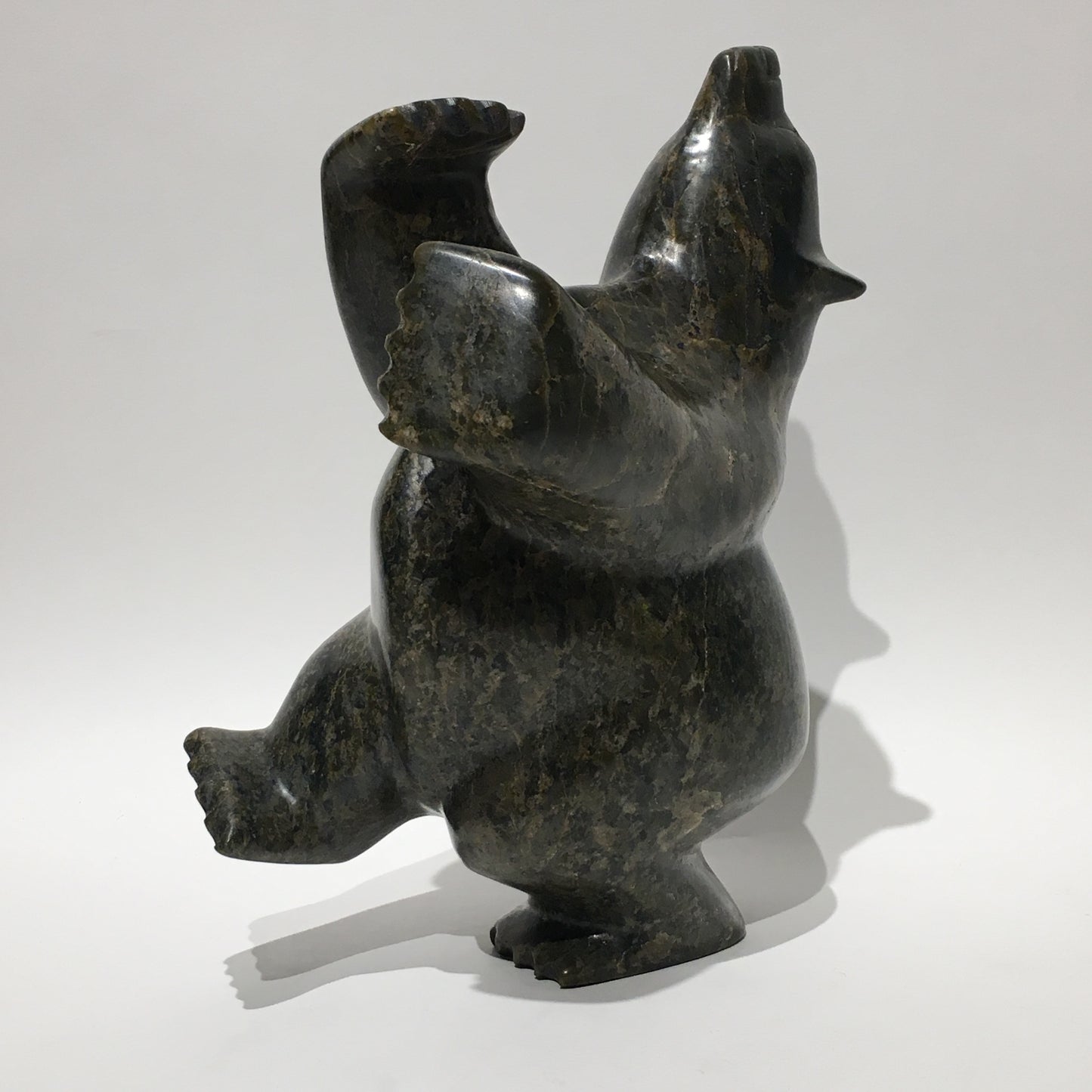
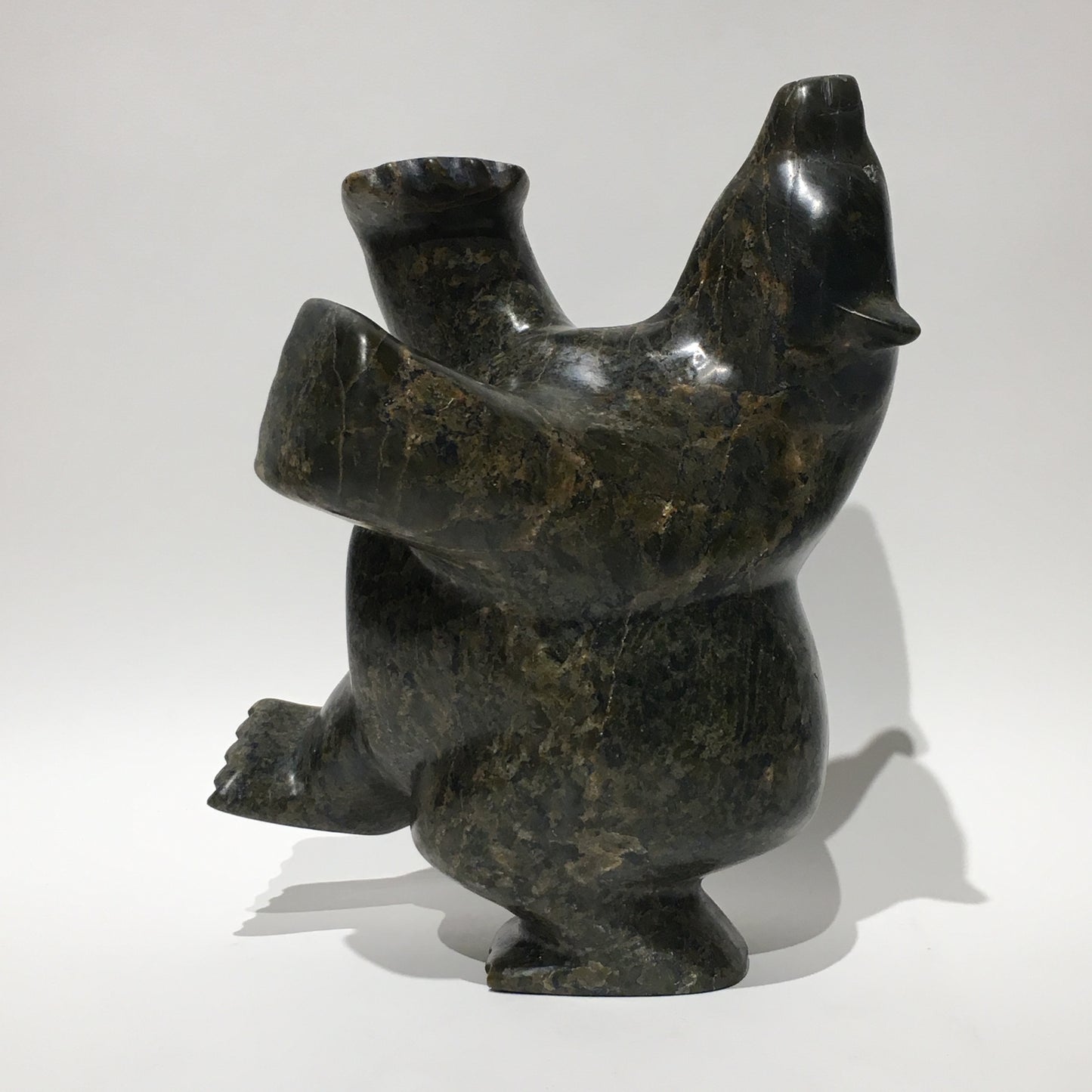
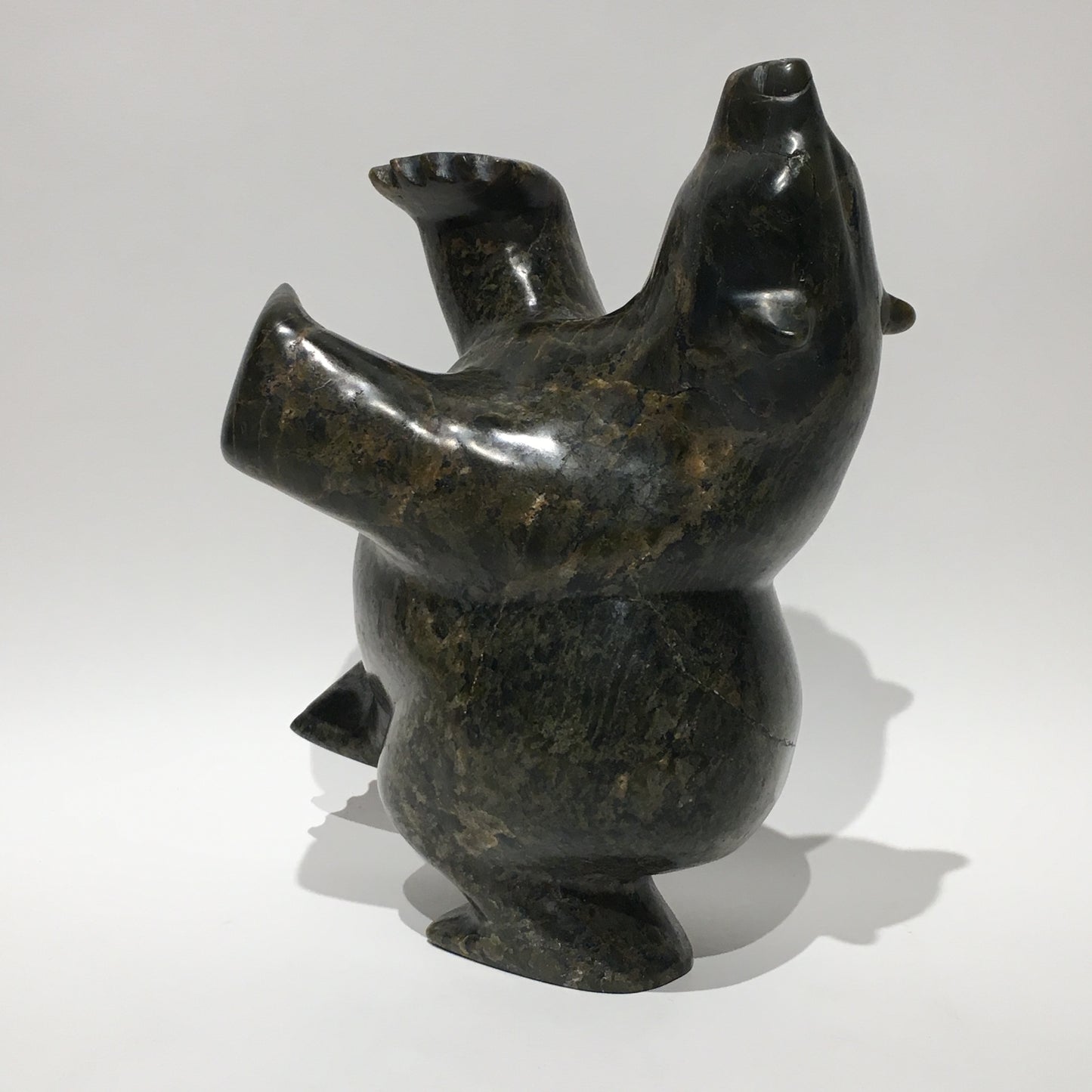
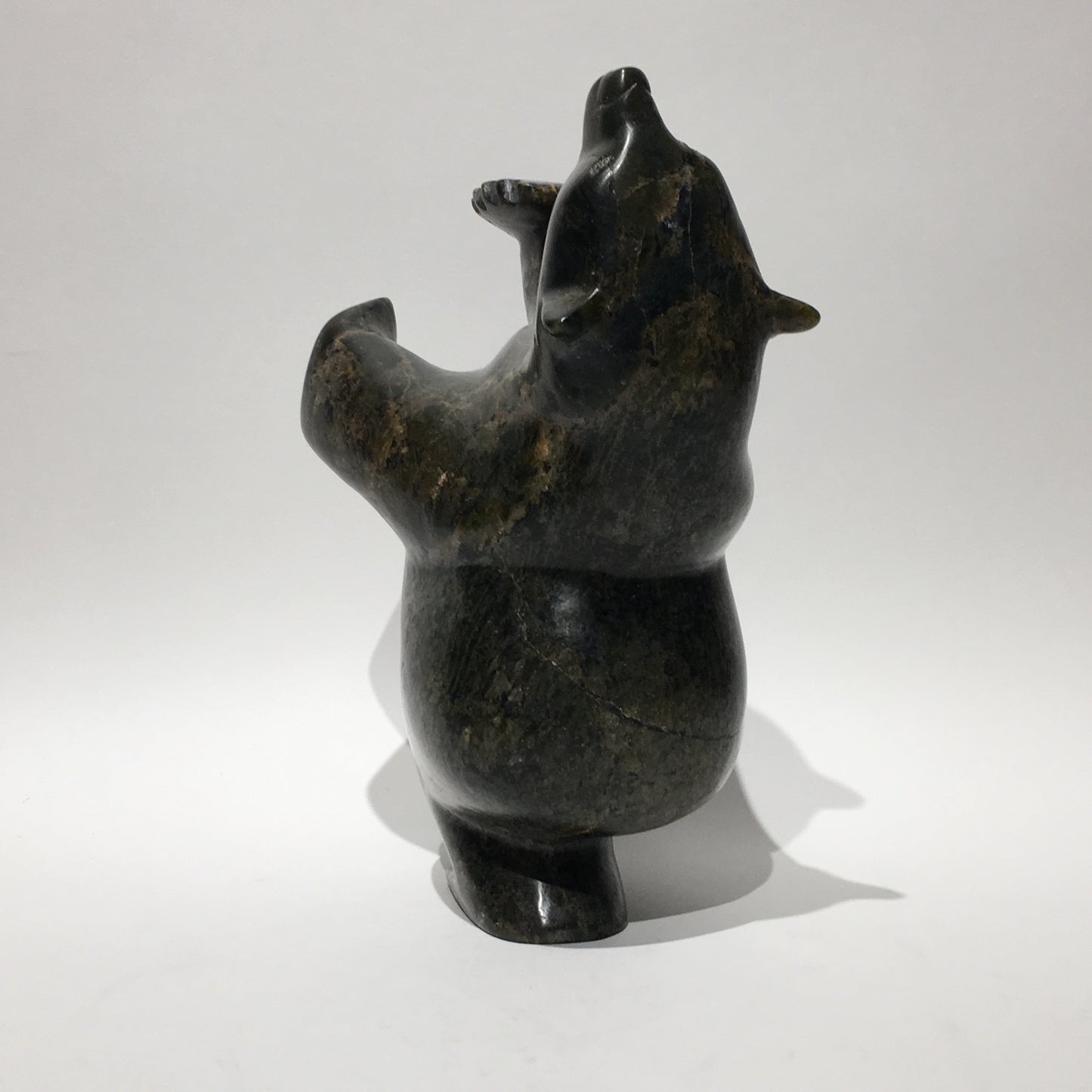
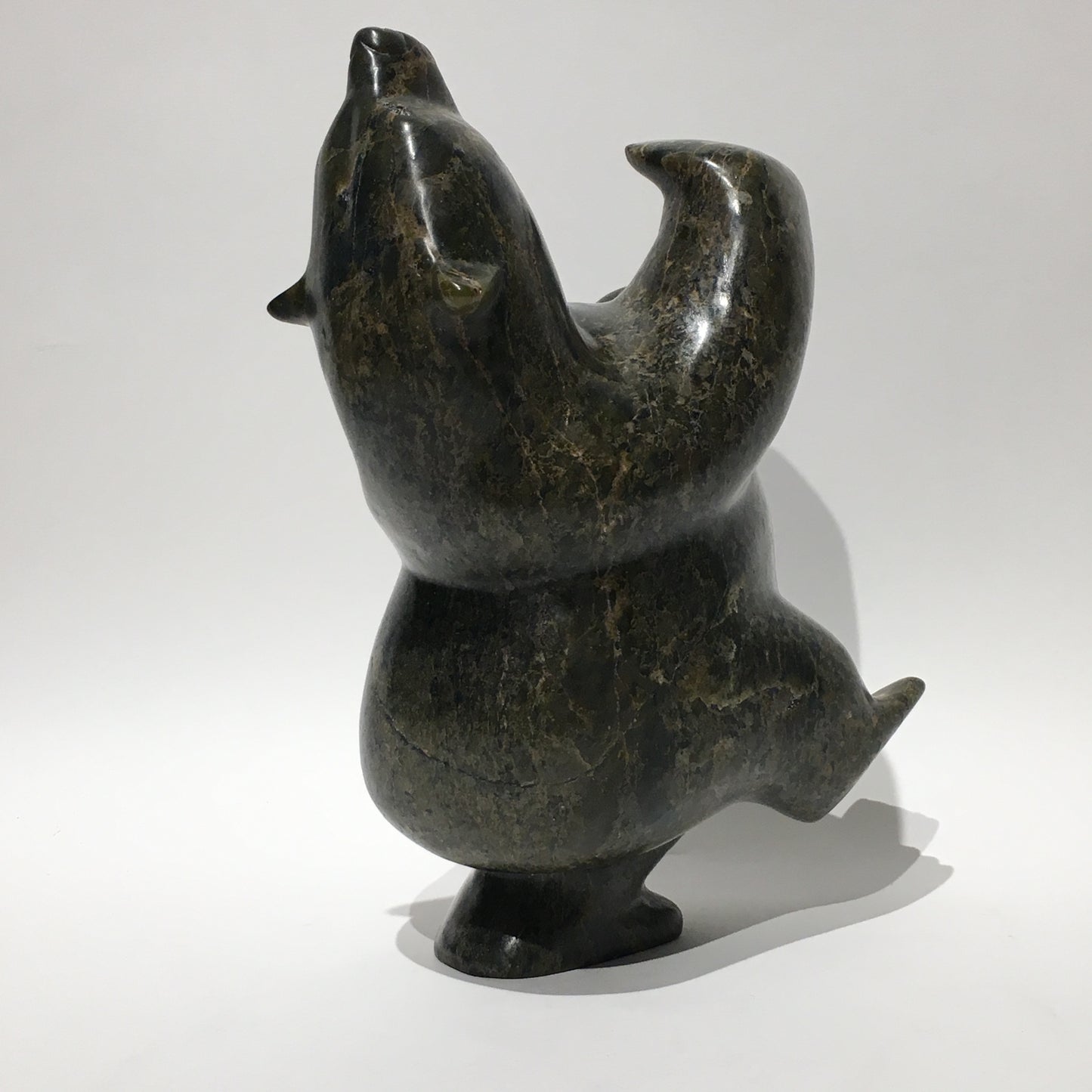
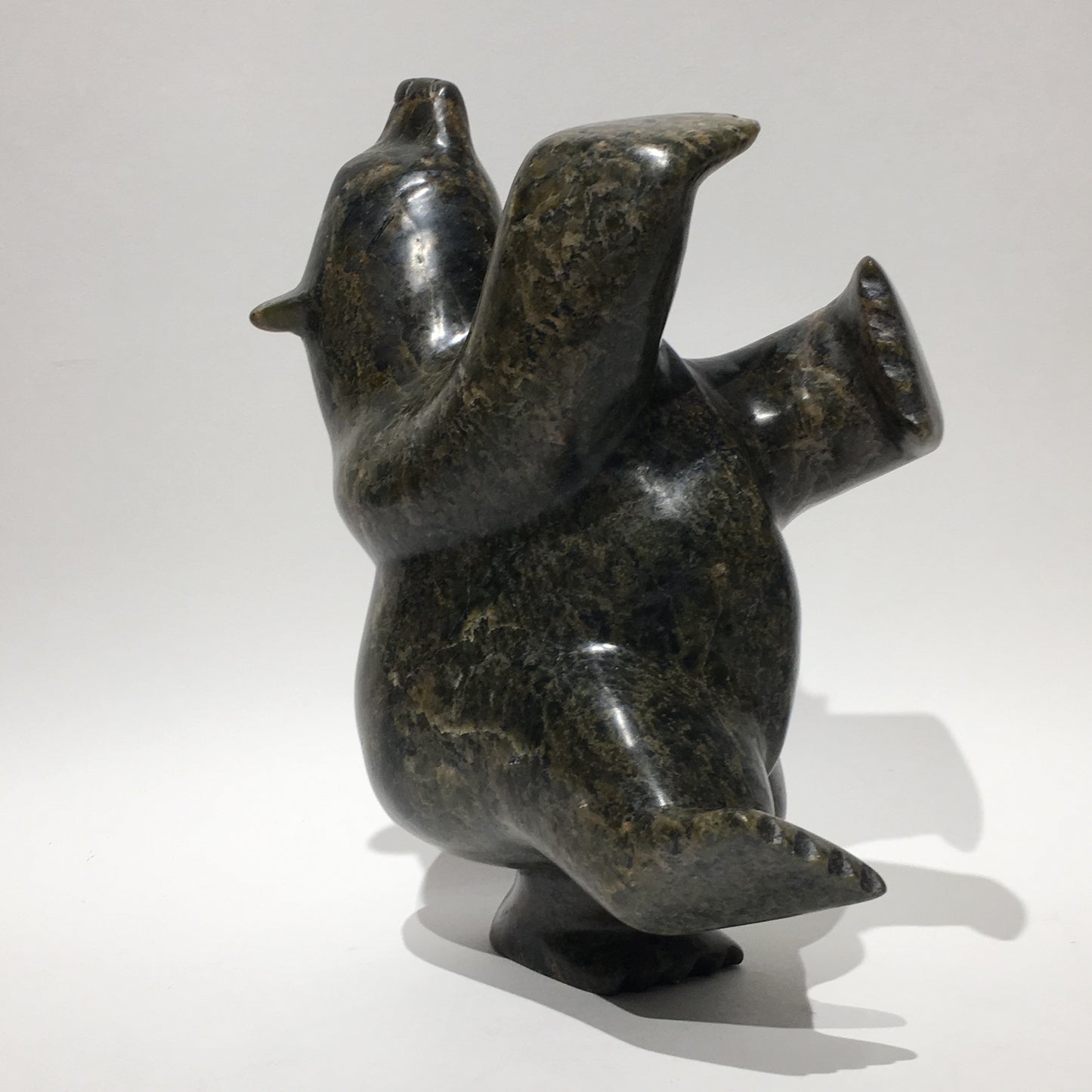
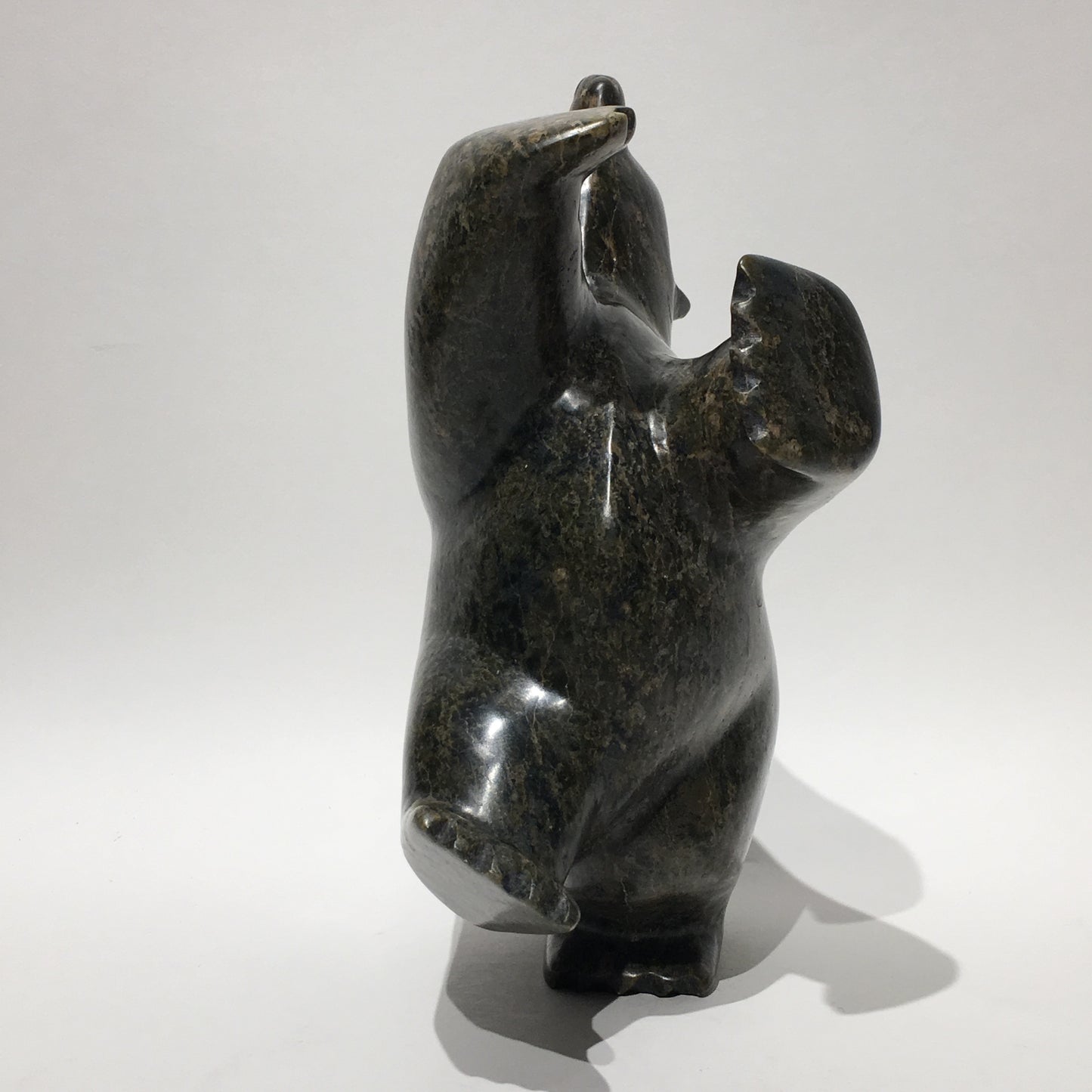
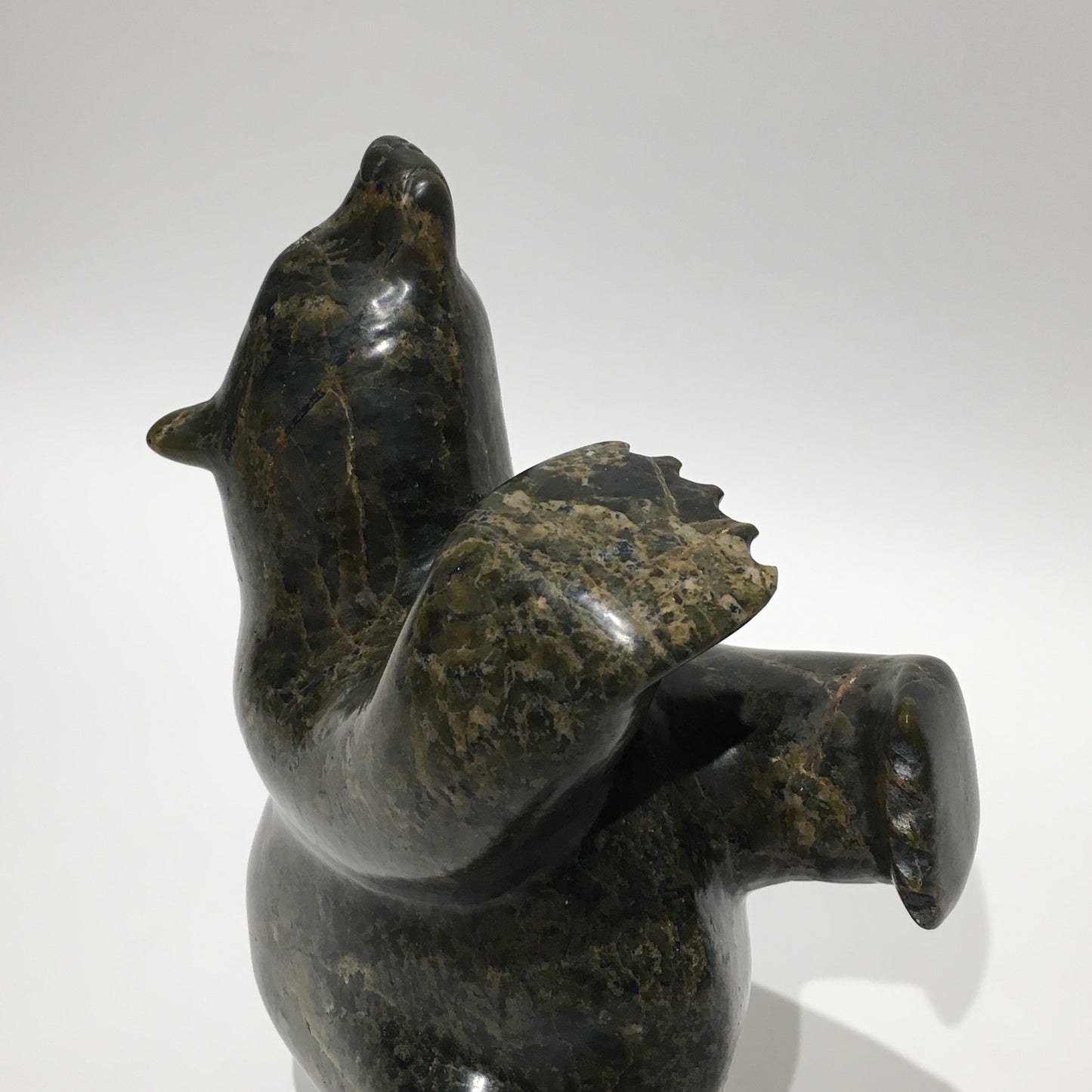
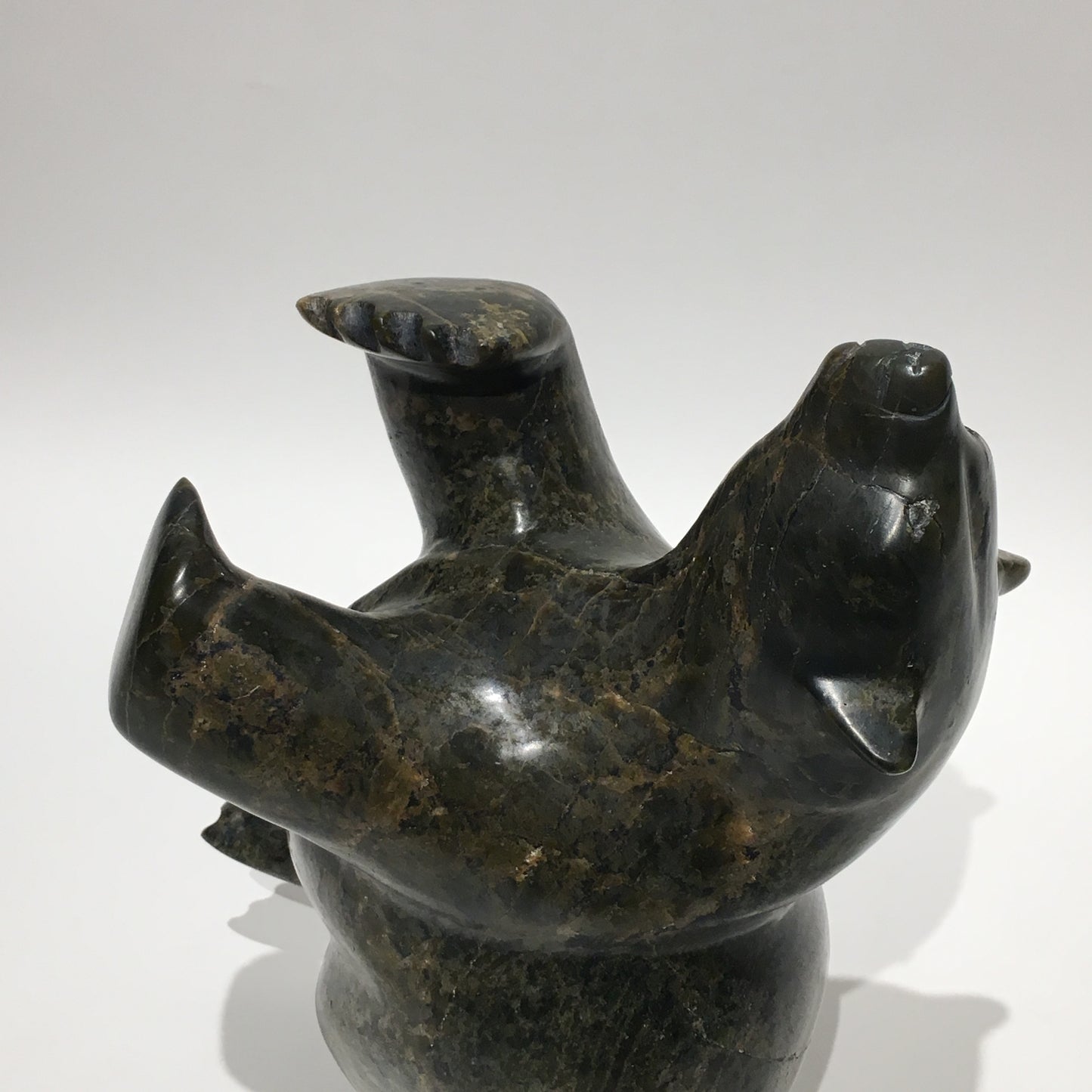
Product SKU
Killiktee Killiktee
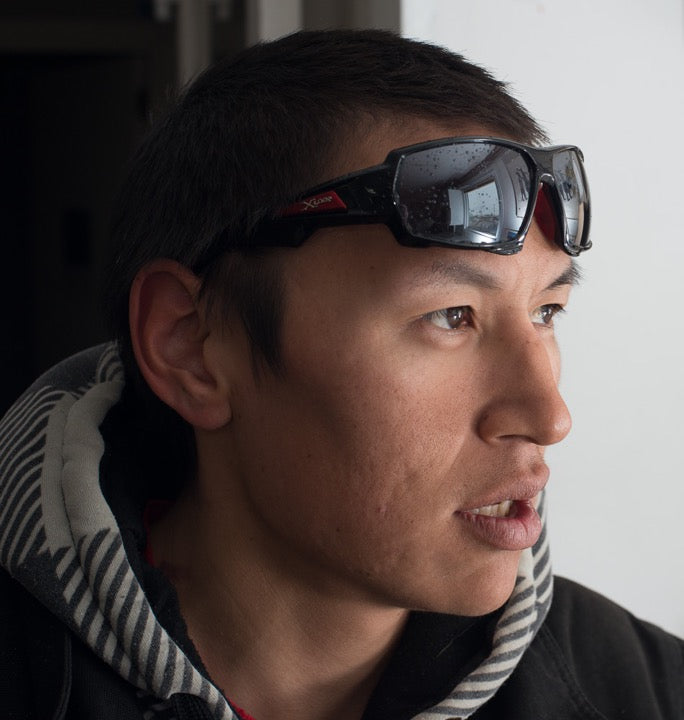
Killiktee Killiktee is a prominent Inuit artist from Igloolik, Arctic Circle, celebrated for her innovative blend of traditional indigenous themes and contemporary art. Her work, which includes printmaking, sculpture, and textile art, draws deeply from Inuit folklore and the natural beauty of her homeland.
Trained under her grandmother, Killiktee’s art reflects her cultural heritage with vibrant prints and dynamic sculptures made from stone and driftwood. Her exhibitions across national and international galleries have earned her acclaim for her unique approach and storytelling.
Beyond her art, Killiktee advocates for indigenous rights and environmental conservation. Through collaborations and workshops, she aims to promote both the preservation of indigenous languages and sustainable practices in the Arctic, bridging traditional knowledge with modern challenges.

